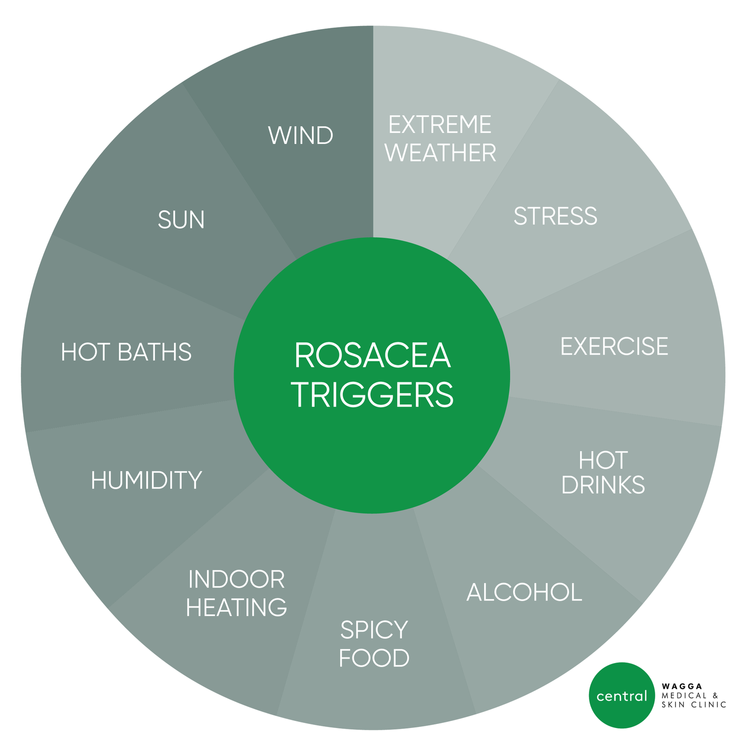ROSACEA
Rosacea is a common inflammatory medical condition that can cause enormous emotional and social challenges for those suffering from the condition. It usually starts between ages 30 and 60, and affects both men and women.
It is a chronic, persistent condition that needs to be managed in conjunction with a medical professional, addressing the number of issues such as diet, climate, medication, hormones and correction of the epidermal barrier (which is often disturbed in this condition).
To book a medical consultation to discuss, please call our friendly reception team on 02 5925 5333.
+ What is Rosacea?
Rosacea is a chronic red facial rash that most often affects the centre of the face (cheeks, nose, sometimes chin). It is most common is those with fair skin and blue eyes, between the ages of 30- 60.
+ How is Rosacea diagnosed?
It is a clinical diagnosis, made my a doctor who is experienced in diagnosing skin conditions.
+ How do I know if I have Rosacea?
Some of the common features are:
frequent flushing
red face with prominent blood vessels (telangectasia)
red pustules on the cheeks, nose, forehead and chin
the skin is very sensitive to creams
large pores
red swollen skin on the nose and cheeks
+ What causes Rosacea?
There are a number of contributing factors, including UV exposure, genetics, environmental factors and flushing. A large number of patients with Rosacea are observed to have hair follicle mites and treating these sometimes greatly improves the condition.
+ How is Rosacea treated?
At Central Wagga Medical and Skin Clinic, we use a number of treatments together - tailoring a plan that will help manage the condition best for each patient. Some of the treatments we will often recommend include:
advice on skin care regimes, in particular, avoiding use of oil or thick emollient creams and cleansers.
Healite LED therapy - this can reduced activity of bacteria and hair follicle mites and reduce inflammation
Prescription facial creams that reduced the mite and bacterial numbers
Vascular laser to reduce the redness by directly treating the enlarged blood vessels and generalised redness
oral antibiotics that reduced inflammation, mites and bacteria, and help regulate sebum (skin oil) production.
+ How much do rosacea treatments cost?
As a medical practice, medicare rebates can be used to claim back some of the costs of treatment. This includes any consultations with our doctors and laser treatments for which there is a medicare rebate. Please see our Pricing Page for more information on the costs of consultations and laser therapy. Laser therapy starts from $250 with a $131 medicare rebate.




